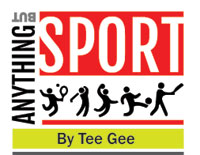Managing Sports in the Pandemic; a thought process!
View(s):At a time when knockdowns and spectator bans are applied across the world, the challenge to keep sports relevant and in the public eye is a challenge that most administrators must be wary of. You can plan all you want, only to be scuttled by health authorities whose primary and all-encompassing task is to keep us alive! So, no conflict with that but how does one keep a modicum of life afloat and bring sports alive, so people at large have something worth looking forward to from the mundane homebound existence most of us are shackled with. It’s easy to feel despondent and indifferent, cursing the regulatory frameworks that keeps us hemmed in, but the bold response is to do what is possible to do and find innovative ways to keep sport in the public domain.
 A fundamental area of concern is to review the organisation one works with day to day. Are the bureaucratic corridors of management cluttered with unnecessary barriers that benefit all but the athlete itself! Are age-old procedures distracting us from what is basic to the sport; empowering our athletes to realise their full potential! These must necessarily be the vital questions that must cross the minds of the powers that be with the belief that most international events will not return to the ways of old. That, like all else, a new paradigm has entered our lives and we must be equal to that new wave of thinking and behaviour! So, let’s examine what some of these critical factors may be?
A fundamental area of concern is to review the organisation one works with day to day. Are the bureaucratic corridors of management cluttered with unnecessary barriers that benefit all but the athlete itself! Are age-old procedures distracting us from what is basic to the sport; empowering our athletes to realise their full potential! These must necessarily be the vital questions that must cross the minds of the powers that be with the belief that most international events will not return to the ways of old. That, like all else, a new paradigm has entered our lives and we must be equal to that new wave of thinking and behaviour! So, let’s examine what some of these critical factors may be?
Administration: Can we evaluate minutely, if the systems that we have developed over the years are relevant anymore. Are manual record keeping and statistical parameters of any use to anyone but the page keepers? Are most costs allocated to office headcounts than the athlete we are supposed to serve? Are glorified hierarchical chieftains protecting their own turfs than addressing the vulnerability of their charges! Is harassment of the athlete a regular phenomenon? Indeed, so many questions!
Communication: If the fundamental concerns of administration are dealt with, the next hurdle is perhaps communication or interaction within and without the organisation. Policy must emanate from the top and then, one voice must prevail. Efficient, simple information streams must bring to bear the most basic demands so all have a common understanding of what is expected. Cross-purposes must be eliminated and all must be channelled to the primary objectives of the organisation.
Training: Undoubtedly, keeping fit and competitive is a no-brainer. There cannot be a compromise from that key objective. But sustaining training programmes in the absence of competition is an onerous task. All athletes go through a programme of development aiming at peaks of performance adjacent to competition. So, how does one reconcile that requirement? Lewis Hamilton provides some insights into that realm of high performance devoid of ringside audiences, focusing on what he is determined to achieve. So, managers, coaches, trainers and athletes must understand and commit to what it takes to stay in contention.
Media: In the absence of a spectator presence at venues, media plays a crucial role of bringing honour and acclaim to the victor and the champion if not to all participants who go out there and give of their best. While TV and mass media still retains its virtues, social media surely bridges the gaps and brings the prowess and glory of sport to audiences in the comfort of their sitting rooms, all in real time and without any evident subtraction of impact or information.
There are many other considerations that one must be attuned to, but let us come to terms with the basic needs outlined above. The Ministry of Sports (MOS) and the National Olympic Committee (NOC) must provide a lead in this direction. The deluge of circulars (an apt reference because of its never ending onslaught) must be replaced by a sharper more useful communication practice and portal. This is a leadership moment which will influence and inspire National Sports Associations (NSAs), to follow suit. It may be even useful for the MOS and NOC to jointly offer a seminar or workshop that elaborates on such a bold plan and disseminates the ground rules that makes this possible! The National Sports Council it is who must spearhead such an initiative. The high-performance unit of the NOC has identified how best our next flow of athletes will emerge. So, we are not far from the edifice of sporting genius. All it probably takes is one hallowed moment!


